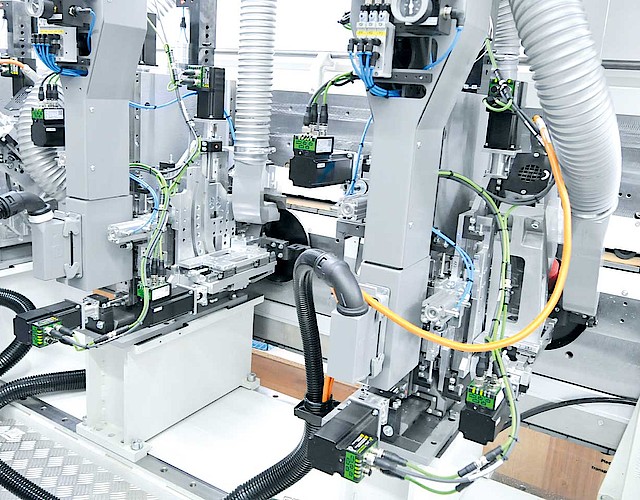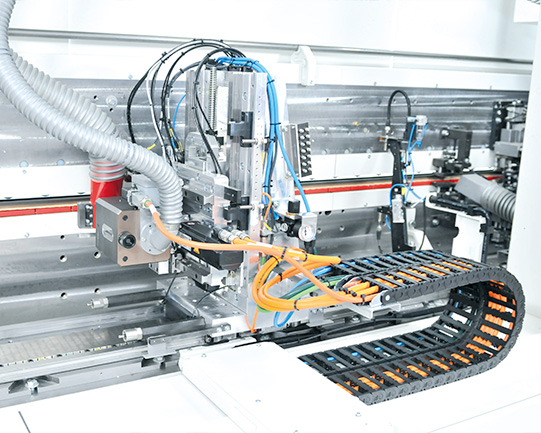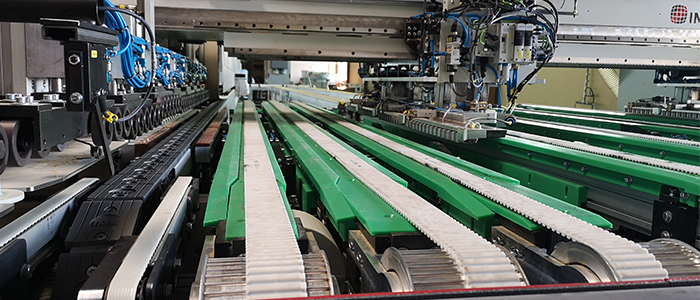

Smooth surfaces, a chic white, and no handle disturbing the clean, elegant appearance. This example shows how aesthetic trends play a direct role in production requirements: more and more often – and not just with white cupboard doors, of course – the door handle is removed and replaced with a profile in the door. In the past, such profiles had to be manually reworked in production.
Not anymore. For automated post-processing of these profiles, IMA Schelling developed the internal contour milling unit I-KFA. This means that profiles that are transverse to the processing direction can also be automatically reworked on the front or rear edge using an end mill with a feeler ring. “This increases not just productivity, but also the quality of this processing step,” explains Dennis Reddig, Product Manager Edge Processing at IMA Schelling.

The new contour milling unit I-KFA is just a building block in IMA Schelling’s offensive for further development and increasing optimisation of its post-processing units. All static aggregates have been mechanically standardised, which reduces the number of components and thereby simplifies spare-parts inventory. The units are now also offered in a Plug&Play design, which enables faster replacement.
In addition, all units that run synchronously to the feeder were converted from pneumatic drives to linear drives, such as the trimming and corner processing modules. This enables the speed to be controlled flexibly and the tracking behaviour to be fully programmed.
Absolute-value axes are now used for the high-precision linear guides. This renders the time-consuming referencing that was previously necessary superfluous, increases reliability, reduces downtimes and speeds up positioning of the supports. A uniform motorised top pressure decoupling also increases the processing quality. At the same time, IMA Schelling improved accessibility and optimised the suction system in terms of energy.
As part of the adjustments, IMA Schelling has also revised the feeder system. Constructive measures such as continuous alignment, decoupling of the master cam from the cam frame, improved vertical adjustment of the stop rows and optimised positioning have significantly increased operating comfort and accuracy. This has several advantages in production: it leads to shorter adjustment times and – you can even hear this benefit – a reduced noise level.
